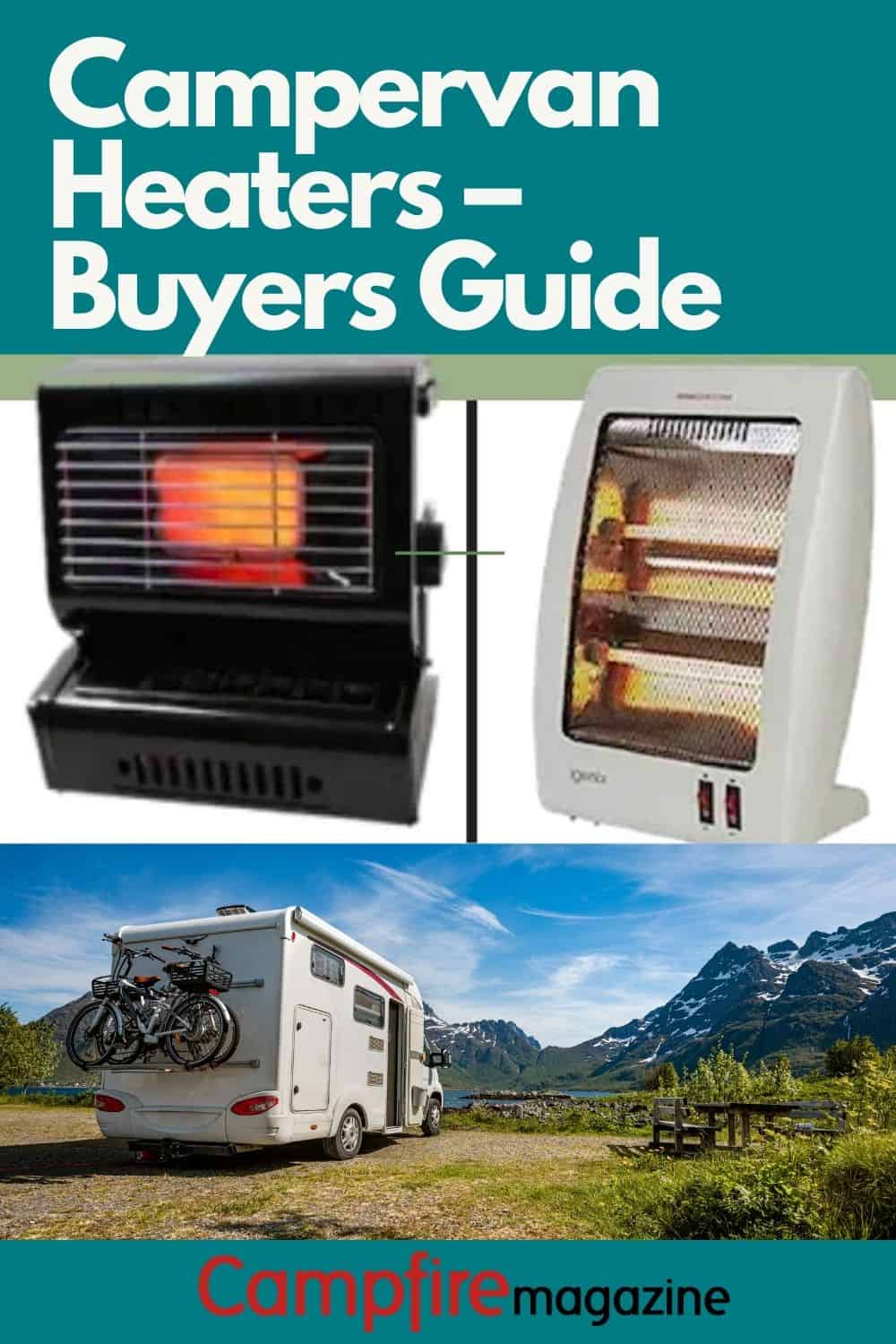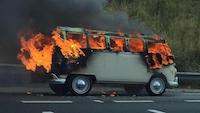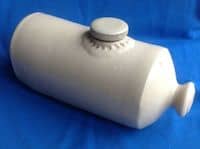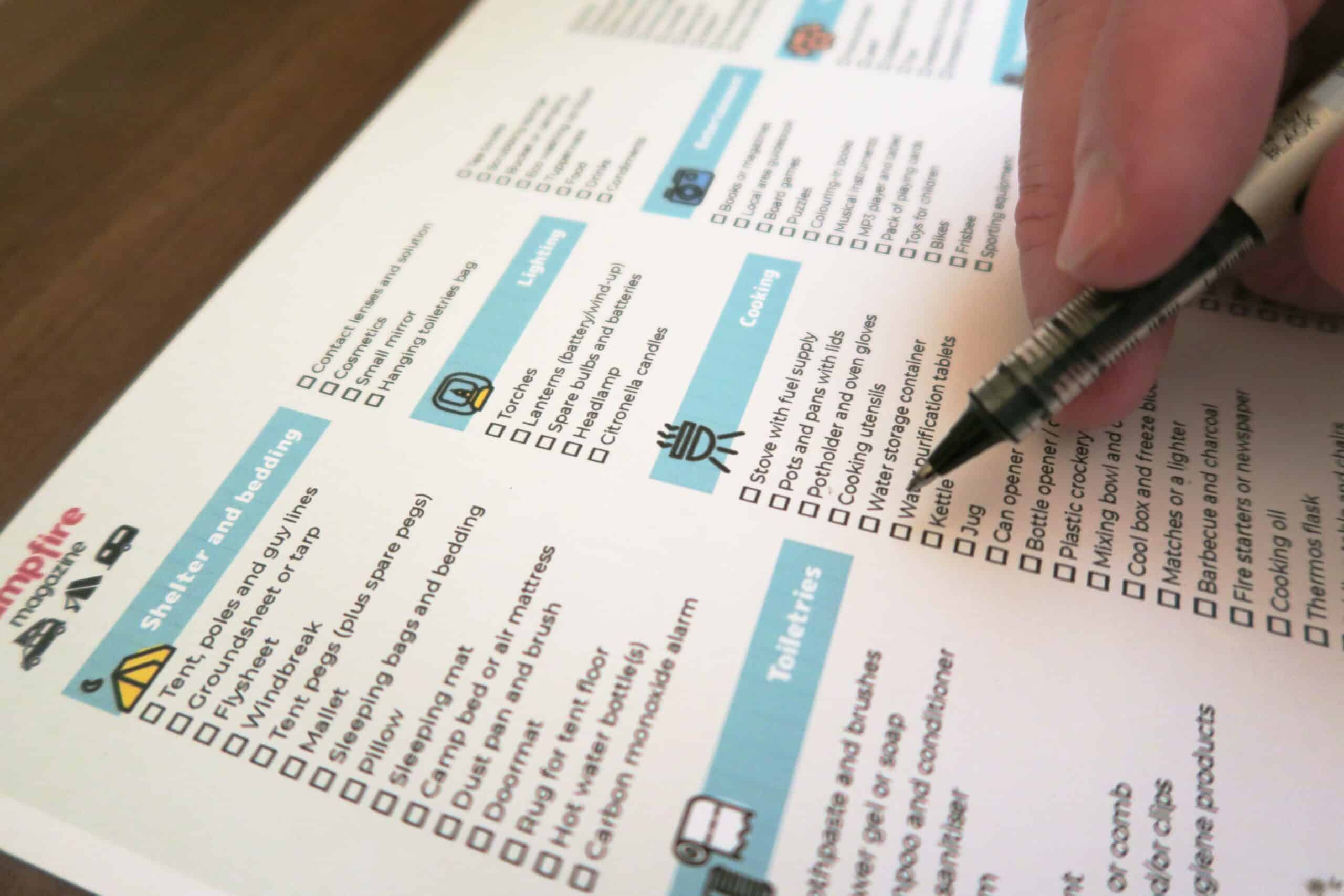Here’s our guide to the best caravan and campervan heaters…with best buys for portable electric heaters, portable gas heaters, blown-air parking heaters and more.
Camping out of season can be fantastic – more space, fewer people and more months of fun and adventure. But how do you keep a campervan warm in winter?

In a hurry? If you don’t have much time using the links below to quickly find our favourite heaters for you on Amazon. You can be assured we only choose the best products…
Portable electric heaters for campervans and caravans
Possibly the cheapest and simplest option (after a hot water bottle and blankets), a portable electric campervan heater will give you instant heat in a compact package. You do, of course, need hook-up.
For instant heat, we’d opt for a ceramic fan heater. For super-safe warmth, choose an oil-filled or, better still, a lightweight oil-free radiator for your campervan.
Oil-Free Radiators
OUR TOP PICK
Whereas oil-filled radiators use electricity to warm up the thermodynamic oil stored inside, oil-free have aluminium or ceramic inside. As well as safety, the advantage is that they’re silent. The disadvantage can be the size and weight.
There’s only only one oil-free small enough to go in a campervan or caravan. Fortunately, the Dimplex Baby (Eco Chico) is also great.
We use this mini oil-free radiator in our campervan (and in the porch at home when we’re not travelling). It’s small and light, heats up quickly and has a thermostat control.
Output of 700W, weighs 5kg and 19 x 30 x 45cm. 30% more efficient than an oil-filled (apparently).
We prefer the Dimplex for size, but this Amos radiator is a little cheaper. It uses mica technology and is silent. Plus you can choose 2000 or 1200W.
It’s 66cm (H) x 63cm (W) x 26cm (D) and weighs 4.65kg. I’d still say too big for most campervans, but fine for a larger motorhome or caravan.
Fan heaters
Simple, cheap and small, there’s nothing like a fan heater for instant warmth when you get back to the van after an autumn walk.
A fan heater blows out warm air, so there’s some noise. Go for one with a decent thermostat, an auto shut-off and as quiet as possible.
Igenix
We like the affordable Igenix (above) and the Warmlite. They can stand upright or lie flat to suit your space.
Warmlite
Neat and small and a choice of 750W or 1500W blown heat. A good choice for a tent (with hook-up).
There’s no thermostat, though, so it’s either on or off!
Ceramic heaters
A step up from a standard fan heater, these are safer, more efficient and still very affordable. They’re essentially fan heaters, but with a PTC heating element instead of a resistive wire. They don’t go red-hot if something gets in the way of the airflow, so they’re less dangerous in a campervan or caravan.
Again, lots to choose from. We rate the Pro Breeze and the Comlife 600/1200W heater above.
ProBreeze (above) also has a 500W mini heater that works well.
You can’t get much more compact than this plug socket ceramic fan heater. It’s 1000W and has an adjustable thermostat, a timer and safety cut-off.
You’ll need to check it’ll fit if your socket is close to the floor or another obstacle, as it needs some space below.
Oil-filled radiators
Very safe for campervans because there are no naked flames or heated wires. Oil-filled are slower to heat up than an oil-free, but retain heat better. There’s a teeny risk of oil leaking, but very rare.
Our choices would be these 500W models:
DeLonghi – 17 x 34 x 40cm and weighs 6kg
Igenix – 10 x 28 x 35cm and weighs 4kg.
12V van heaters
Don’t get excited! There are no 12V heaters that will keep you warm enough.You’ll see lots that look like this one (in black, grey or red, but all the same). They’re described as windscreen demisters and car heaters, but they really don’t do much at all. In fact, they’ve been known to simply fuse the system. Don’t bother!
Halogen heaters
Sadly, we haven’t been able to find a halogen heater we can wholeheartedly recommend. Most are a bit too bulky for small campervans or are cheaply made and unreliable.
The best we’ve found is the 400/800W Igenix.
Halogen heaters are the bright glowing ones – basically halogen lightbulbs that radiate infrared rather than light. They only warm up what’s directly in front of them rather than the air, but they look cosy.
Carbon heaters
Carbon heaters use a lamp very similar to a halogen heater, but with a carbon filament. The type of infrared is better at warming our skin, so a 500W carbon heater will give you as much warmth as a 1kW halogen.
They’re efficient, but are really too tall for most campervans or caravans (in our opinion!). Best of the bunch is the 1000W Steba Veito (above)
There’s also a slightly cheaper and neater option from the Ironware brand, rated at 900W
Portable camping gas heaters
Gas heaters may seem a simple option, but they’re not ideal. We really don’t recommend them for inside a campervan because of the very high risk of carbon monoxide poisoning and fire.
If you really must have one, make sure you get an excellent CO monitor and always have plenty of ventilation. Never leave it unattended. As well as the danger of fumes, all gas heaters produce a lot of condensation.
Please avoid the Kampa Hottie, we’ve heard some near-horror stories about this one’s safety.
Heat yourself not your van
Here’s another option that works well if you’re in and out of the van or tent a lot, or if you want something that has a use beyond camping.
There are lots of waist belts, bodywarmers and jackets that come with heat pads embedded. They’re powered by portable powerpacks (like the ones you use to recharge phones). You can see more about these in our camping power article.
It’s important to choose one that’s got good temperature control. We’re highly suspicious of the safety of some of these, so do read the bad reviews rather than the good for a clearer picture.
We’d opt for a belt rather than a jacket as it’s more versatile. The best we found was a graphene-based waist belt (now you ask…graphene is the one-atom thick material first isolated at the University of Manchester).
We recently purchased some Blazewear coats for ourselves, and whilst the heating element was good, we found the build around the battery and the wiring to connect it to be a little poor, with the wire snapping within a month of wear. We won't be recommending them.
Cartridge heaters
Fikujap Portable Gas Heater Outdoor
There’s nothing to choose between the Fikujap (above), Yellowstone, Topflame, Bright Spark and Highlander gas heaters. Like so many basic camping products, one factory seems to make the same item for lots of different retailers. We do try to point that out when we can, especially if you’re needlessly paying double for the same piece of camping gear!
They take butane cylinders and have piezo ignition (no matches needed).Heat output is around 1.3kW and the size around 28 x 19 x 28cm.
If you swivel the heater section to horizontal and add a little grill, you might even be able to make toast.
Stove heater adaptor
Upright gas heaters
Another small option is the Kampa parabolic 700W cartridge-operated heater. This one doesn’t have an ignition. You’ll need something solid to stand on.
Old-fashioned heat
Great tip from reader Dave Harding. These vintage stoneware hot water bottles (provided you check for leaks) are a brilliant way to keep warm. And no plastic!
Blown-air parking heaters for campervans
Once installed, they’re cheap to run (diesel more so). You no longer need hook-up, so you’re free to wild camp in the snow. They give you the equivalent of central heating, often with a timer, remote control or app control.
Installation, installation
The key to efficient auxiliary heating is installation. All the top brands are reliable, so your choice of system should be guided by finding an installer you trust and who can put you in touch with previous customers.
Check with those fellow campervanners how the installation went and whether they’re happy with the result.
Installation usually involves cutting through the bottom of your floor. Yikes! That’s why you don’t want a cowboy riding into town. There’ll be an air intake, an air exhaust, a fuel line running from your tank to the heater, power wiring and thermostat control wiring.
Diesel and propane heaters warm slowly and steadily rather than the blast of a fan heater, so tend to be more comfortable. They create little condensation too. Expect to pay between £1,000 and £2,000 for the equipment and installation.
Questions to consider and ask your installer:
- Can you put me in touch with previous customers?
Can you show me what the internal fittings will look like? We’ve seen some outlet pipes that stick out rather obviously, for example, and plastic grilles that don’t match the inside colour scheme.

You wouldn’t know this intake grille was retrofitted.

We weren’t keen on this type of outlet. Flush is better.
- Can I check how much noise it makes (both inside and outside? Could you (and your neighbours) live with that level on a quiet campsite in the dead of night?
- What are my options for controlling the system?
- What about SIM-enabled systems that I can control from an app? These are expensive. Do you want the extra expense of a SIM contract? What happens when you’re in a no-signal area? What happens to data roaming if we leave Europe? We chose NOT to have this control based on all those uncertainties.
- Should I pay extra for a remote control? Again, this adds cost. They only work within a short range. Given that it’ll take five to 10 minutes for the van to warm up, it’s only really useful if you’ll use it from the comfort of your house before you get into the van in the morning. If you’re imagining turning it on as you walk back to the campervan after a hike…well, you’ll be back at the van before there’s much warmth.
Do-it-yourself?
Of course, if you’re a skilled mechanic and you’re building your own van from scratch, you can just buy the kits for diy installation (Triclicks is a good ‘un).
Ebay is also a great source of affordable new diesel heaters and the reviews of the dealer can usually be trusted.
The Triclicks diesel heater kit is pretty well thought-of and a very good price if you feel confident enough to DIY your heater (or if you know a friendly fitter).
Just over £100 and comes with everything you need, including a remote control.
Diesel heaters for campervans
Diesel parking heaters draw fuel from the main diesel tank and through a burner/heat exchanger under the vehicle. They then duct hot air into the van through a small grille. The combustion happens safely underneath the van.
You don’t need to run the engine. They work independently. Diesel heaters can be a bit noisy, but some come with mufflers and insulated boxes to lessen the sound.
You’ll get around four hours of continuous run-time for around a litre of diesel (based on Webasto Airtop 2000)
The main brands are:
- Webasto and Eberspacher
- Other options – Planar, Airo and Truma
Propane campervan heaters
Propane-fuelled systems are similar to diesel systems but, of course need a fuel supply. This could be a disposable canisters or refillable propane tank.
If you’re already using propane tanks in your van, you may be able to tap into your existing propane lines.
Propex is the brand of choice (the other is Truma, but these seem to be preferred by motorhome and caravan owners). The Propex systems come in a range of sizes for small campervans to big motorhomes. Some models are installed underneath the vehicle, others go in a bed-box or cupboard.
A 13kg propane tank will give you around 90 hours of heat from the smallest Propex furnace.
Propex also do a dual-fuel gas/electric heater for when you’re on hook-up.
Propane systems will often struggle or not work at all above a certain elevation. Ask your installer if you expect to be camping in the mountains.
Woodburning stoves

While we love a woodburning stove outside on an autumn night (have a look at our guide to woodburners for camping), stoves inside the van are really only for live-on-board campervanners.
The disadvantages are many – the risk of fire and carbon monoxide poisoning, the work involved in installing it and the danger of having super-hot surfaces in a small space.
Keep your woodburner for outside the van
Despite our reservations…there are those who love their woodburner, and there are stoves small enough to fit in a van. Consider, though, how much space you’ll also need for the heat protection around it, for the chimney and for the fuel.
The photo of that cute stove and kettle might make some of you go: “Yes! That looks gorgeous”. I just get the collywobbles.
Instead, get yourself a portable woodburner for warming up outside with a view of the stars!

We like the DWD and Outbacker stoves. You can cook on it and boil water for your hot water bottle in the great water heater attachment.
If you’re a safe and happy campervan woodburner, set us straight, of course.
Keep warm in a campervan the low-tech way
It’s very possible to stay warm in a campervan or caravan without any heating at all. It’s all about and piling on the layers of clothes, blankets and sleeping bags.
- Insulated thermal (silver) screens for your windows will keep in a lot of heat. Buy them off the shelf or get them custom-made. Maypole are great for VWs.

- If you’ll be using the pop-top roof, think about insulation there too. You can make your own inside using insulation fabric (be careful you don’t create condensation between the fabric and the roof canvas). Or get a pop-top roof cover that goes over the outside to keep in heat and keep out rain (or snow!). We like the German-made Calitop because it comes in separate parts, which makes it easier to fit.
- Don’t forget the hot water bottles.
- Read our articles on out-of-season campsites and winter wild camping for more ideas.
What To Look For In A Campervan Heater
Even after looking at our favourite campervan heaters, you’re still going to need to choose between them. There’s quite a lot to consider and this can lead to people forgetting to check certain features and ending up with a heater that isn’t quite right for them. Use our handy buying guide as a checklist to make sure you get the best product for you.
The Best Type Of Heater For A Campervan
There are generally four types of campervan heaters to choose between; electric, petrol, propane and wood burning. While there are pros and cons to each, we have to say that the electric heaters are by far the safest option. If you have kids then we would recommend this type above all else.
What’s more, electric campervan heaters tend to be a lot more affordable so they’re a great option if you only travel from time to time and want something that isn’t going to break the bank. That said, powering them is quite the opposite as you’ll burn through a lot of energy to keep them going.
Petrol or diesel heaters are quite expensive to install as they need to be fitted to the van and are usually located under one of the front seats in the van. They’re incredibly effective and kick out a decent amount of heat so if you regularly travel in winter, they’re definitely worth considering.
Another great advantage is that these heaters use the fuel from your vehicle so you won’t need to worry about powering them separately. Of course, this does mean that you’ll probably get through more fuel and find yourself having to fill up more frequently.
Propane heaters are a popular choice but the huge downside is that you will need to carry around a tank with you. If you are already pushed for space, this can be problematic.
However, if space isn’t an issue, then a propane tank is an affordable and effective option. The tanks don’t cost much and are widely available. What’s great is that these propane tanks are multifunctional and can be used to power other camping appliances like a stove.
You should keep in mind that if the tank leaks, this does pose a danger to your health so it’s worth having detectors in place to ensure this doesn’t happen.
Also think about whether the propane heater is suitable for indoor use. Some manufacturers recommend only using the product outdoors. This is because you need excellent ventilation when using a gas heater indoors. While this is possible in your campervan by keeping the doors and windows open, it’s going to mean losing some of that precious heat.
Finally, you might opt for a wood burning heater. There is no denying that this type of heater is the most cosy and relaxing. After a long day on the road, especially in cold weather, it can be a real comfort. Moreover, the cost of wood is very affordable so this option won’t break the bank to sustain.
However, the initial installation and setup of the wood heater can be quite pricey so you would need to be willing to invest. Moreover, these heaters can be dangerous and burns are likely if you aren’t careful.
Ease Of Installation
Depending on the type of campervan heater you go for, you may need to perform some installation. This is especially true of petrol or diesel heaters. It's important to make sure that your heater comes with all the fittings and accessories you need.
Moreover, you should check that these fittings are reliable and strong. In some cases, the ones that are supplied with the product aren’t the most durable and you may need to buy something a little more robust.
You should also consider how easy it is to install the heater and whether it comes with suitable instructions.
How To Stay Warm In Your Campervan
When you’re heading out on the road in cold weather, especially if you’re planning a longer trip, it is essential to keep warm. One of the great things about installing a heater in your campervan is that you’ll be able to enjoy lengthy adventures no matter what time of year it is. Oftentimes, campers will set out in the middle of winter only to return home much sooner than planned thanks to freezing temperatures.
What’s more, it isn’t uncommon for your van batteries, pipes and water containers to freeze when the mercury drops, which is the last thing you want. By keeping your van warm, there is far less chances of this so you won’t have any problems when you’re on the go.
That said, while a heater is an excellent option, there are other things you can do to stay warm in your campervan and make sure you get the most out of your heater.
- Try separating different areas of your campervan using curtains, this will allow you to better keep heat locked in specific areas, especially where you are going to be sleeping.
- Thermal curtains are a must in cold weather. Not only will they stop cold air from getting in but more importantly, they’ll keep the heat from your heater inside the van which will save energy and keep you warm.
- Try not to rely too heavily on your heater to warm you up. You should already be warm and your heater should be a way of sustaining this. The best way to get yourself as cosy as possible is by wearing layers. If you get too hot, you can always remove a layer but by doing this, you trap body heat between the layers and are warmer from the get go.
- Have other ways of staying warm such as hot water bottles or electric blankets. Not only will these add to the heat when your heater is running but they can be a lifesaver should the heater break or experience problems.
- Don’t scrimp when it comes to sleeping bags and blankets, especially if you are taking a longer trip. It’s a good idea to invest in these items and make sure you are getting sleeping bags and blankets that will keep you as warm as possible.
- Choose your camping spot wisely. Parking your van in a wide open space is going to expose it to wind, chills and cold air. If possible, choose a sheltered spot that keeps your van out of the wind; this will make a huge difference to the internal temperature.
- Make the most of having a warming hot chocolate around the campfire before going to bed. It’ll warm you from the inside out but it’s also an excellent way to wind down before going to sleep. You’ll wake up refreshed and ready for your next adventure!
Frequently Asked Questions
How do you keep a campervan warm?
Do you know how to keep a camper warm? It's actually really simple - all it takes is some insulation, and of course, the heater. With these two things in place, your camper will be just as warm as any other living space. And when there are no campgrounds nearby where you can stay for the night (or if they are too crowded), this trick will ensure that you have a cozy spot to sleep in.























